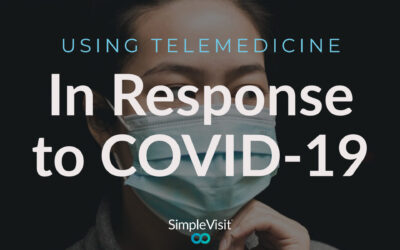
The Costs of Offering A Telemedicine Program
“What will offering telemedicine to patients do to my bottom line?”
This is the concern that many of my discussions with doctors has inevitably boiled down to. The answer, as you may expect, is not exactly straightforward.
Figuring out if an investment in telemedicine is right for your medical group can be tricky and depend on factors such as geographic location, the types of patients you see, and the insurance carrier your patients are covered under. When looking at whether a telemedicine program is right for your group I think it is important to first understand the costs of implementing a new telemedicine program.
Practices looking into the implementation of a telemedicine system need to understand what I like to call the “total costs” associated. Often the cost of implementing new technology goes far beyond the sticker price of the hardware or service. Costs such as provider training and consumer adoption should not be overlooked when searching for your groups telemedicine platform. We see many cases of expensive teleconferencing equipment lay dormant in hospitals because providers and patients struggle to adopt and lack adequate time to learn it.
Costs associated with implementation can be grouped with four distinct categories:
Technology
Costs in telemedicine from one solution to the next range vastly depending on what your group is looking for. Some companies sell purely a video solution, meaning they enable your providers to schedule and hold appointments online over a video session using they seller’s solution. While others offer hardware and actually bring their own providers to the solution, and are usually tailored to the larger systems that can afford the higher entry cost. The fees associated with purchasing a new telemedicine system can vary from the cost of new hardware, installation fees, or monthly subscription costs. This will be your baseline cost for your new telemedicine program and it is important to understand how well the telemedicine solution covers the following costs you will incur when implementing your new program.
Implementation
Will your providers and staff need to be trained on new equipment? Will workflow have to switch to accustom the new telemedicine program? Will providers openly embrace and utilize your new system? All these questions and more should be considered when rolling out a new technology. A low cost pilot is a great way to test whether a new technology is adding value or just creating barriers for your group’s providers. As mentioned earlier the greatest technology in the world does no good sitting dormant.
Patient Adoption
Many medical groups do not have the privilege of robust marketing teams behind them, so when planning a new product rollout the burden of informing patients primarily falls on the care team. Unlike a medical device where utilization is a given, patients are often given the choice on whether to utilize telemedicine as an alternative to an in person visit so they must be convinced that it is a worthwhile endeavor. Technology barriers and concerns about privacy often limit patients willingness to see their providers over video. In our experience the key to a successful telemedicine rollout is having easy to use technology paired with multiple informational channels where users can learn more about the telemedicine program such as in office handouts and website advertising.
Expansion
Telemedicine has the potential to work across many disciplines. When choosing a new program it is important that your telemedicine service can support the growth of telemedicine within your organization for the long term. While initially only one provider or department may have a need for video visits, buyers should not be short sighted in their purchase. Limiting yourself to a solution tailored to just to one need will lead to long term growing pains, as you will have to keep searching out different solutions for different needs.
Our advice to providers and administrators is buy what you need, not what you want. The bells and whistles can be appealing, but often pose a real challenge to the current workflow that many providers currently find themselves in. Identify your biggest threats to the survival of your practice, whether it is long wait times, lack of specialists, or competition from surrounding urgent care centers and health systems. Once you have identified this, find the telemedicine service best equipped to fill your needs, while still being practical with your existing barriers. At the intersection of demand and usability is the perfect telemedicine service for your group.
SimpleVisit™ allows healthcare providers to deliver secure, branded care to patients over any device using Apple’s FaceTime, Google Hangouts, or Microsoft Skype. This service utilizes patented technology to connect healthcare providers and patients over common video communication applications. Call (877) 83-VISIT or email info@simplevisit.com to learn more.
About SimpleVisit
SimpleVisit is a video service which allows patients and providers to connect over the video platform of their choice. With SimpleVisit providers are able to deliver on-demand visits to patients over any device or platform they have available to them. For more information on SimpleVisit and on how we are enabling providers to host virtual visits check out www.SimpleVisit.com
Industry Leaders Push for Permanency for Telehealth Coverage Expansions
Allie Clark | 8 min read | June 8, 2020During the COVID-19 pandemic, telehealth has been necessary for not only the health of all American citizens, but also that of healthcare companies of all sizes. Virtually delivered services have kept many medical offices open...
Allie Clark | 10 min read | March 6, 2020[Updated on November 20, 2020] Our world is in the throes of what is undeniably one of the most severe infectious disease outbreaks in modern history. Coming up with innovative approaches to stem the spread of the infection of...
20/20 Vision: Presidential Panorama
Allie Clark | 6 min read | February 10, 2020[Updated March 10, 2020]As we continue on into 2020, more opportunities for growth and advancement of virtual care delivery abound. This year also brings the single biggest event that happens in our country: a presidential...



